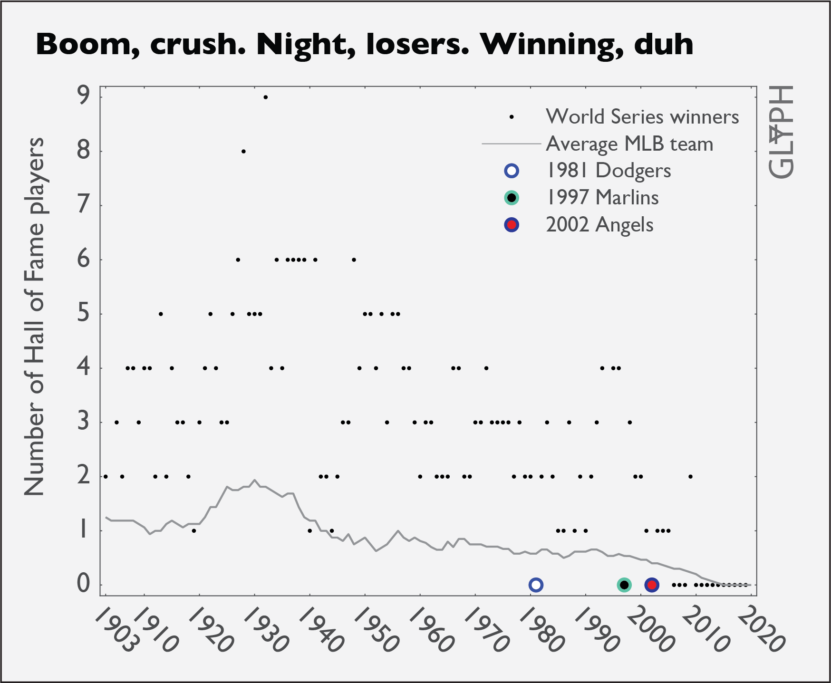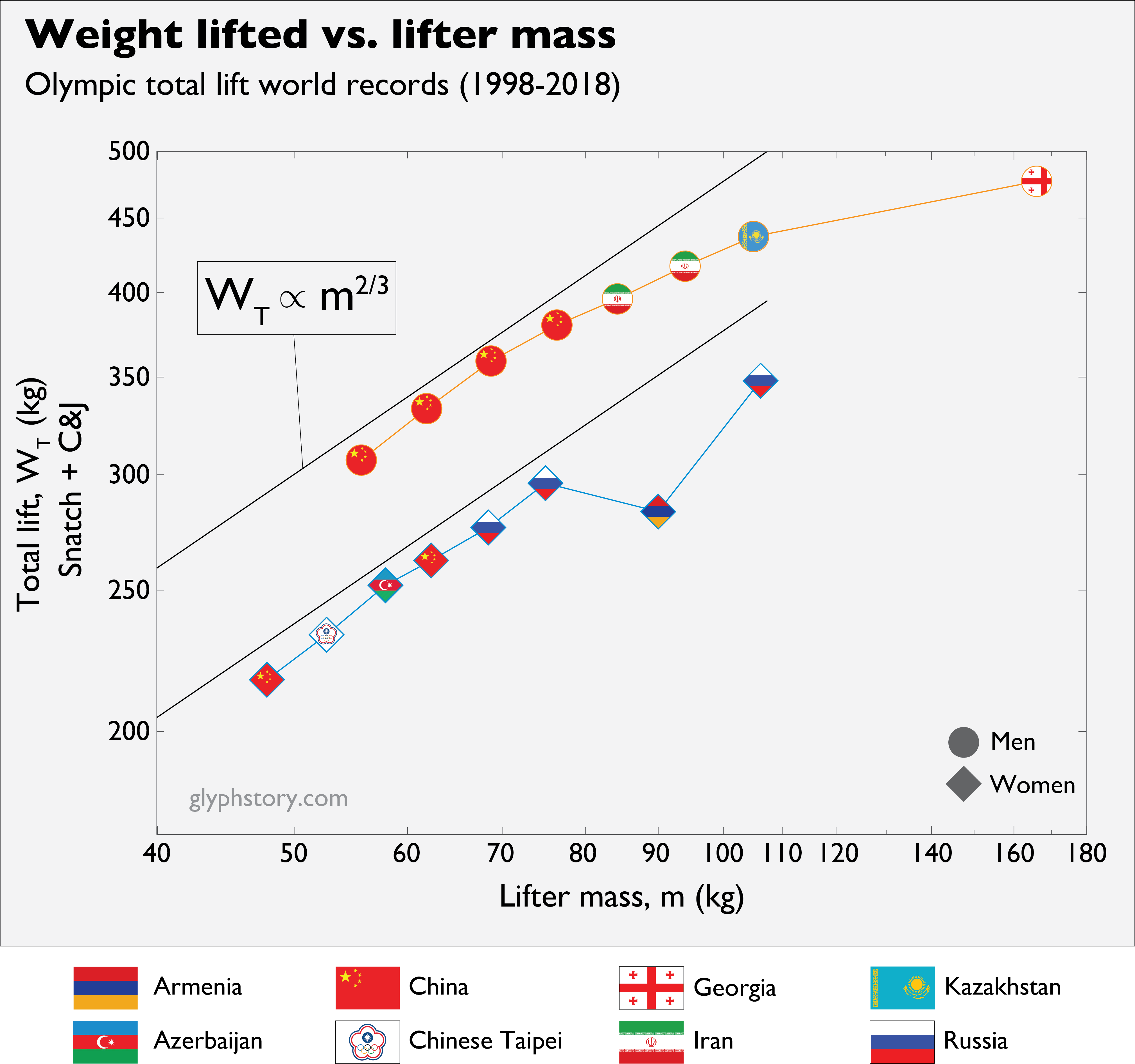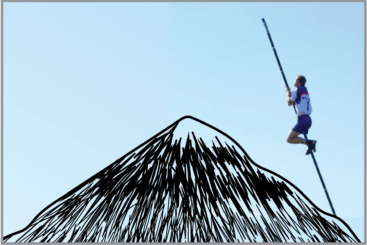A trophy without a plaque
During an episode of The Hunt for Reds October1, there was a discussion about whether the winner of the 2020 postseason would be considered a “real” World Series winner. A cited precedent was the 1981 season, interrupted mid-season by a players strike. Advancement to the post-season was goofy that year, with the owners electing to play the winner of the first half of the season against the winner of the second half. As opposed to…not that. Teams played between 103 and 111 games, winners of the first half had nothing to play for, the Expos won entrance by half a game, neither National League team that led their division in total record was in the playoffs, and the Royals were in the playoffs despite an overall losing record. It was a real shitshow, and people knew it at the time2 3.
Here’s the thing. The Dodgers won the World Series in 1981, and there is no asterisk next to it. Thirty-nine years removed, the most memorable thing about the team is probably Fernandomania, rather than the weirdness that got them into the playoffs. As it turns out, there is another thing about those 1981 Dodgers that is a bit strange, shown in Fig. 1.

Unique among Series winners before the expansion of the playoffs in 1995, the 1981 Dodgers had no Hall of Fame players, although their manager (Tommy Lasorda) has been elected as a manager.4 Interestingly, the four teams that would have made it into the playoffs by total record that season each had at least one Hall of Famer, as did the other seven teams that actually made it to the playoffs. What’s more, there isn’t a Bert Blyleven or Tim Raines situation, where a player appears to have been substantially overlooked. Steve Garvey had some voting support5, but topped out around 40%6.
This is not the case for the 1997 Marlins, who played Gary Sheffield in right.7 Gary is not in yet, having languished around 10% of the vote for several years before making a big step up to 30% in the 2020 vote. This is probably a combination of several factors. He played on a lot of teams, so he doesn’t have as much of natural constituency among writers. There are credible steroid allegations8 against him. He also made some people uncomfortable, whether by saying true things, doing awesome things with his signing bonus, or being active in contract negotiations. Or fighting them. Gary Sheffield is awesome.9
The other team with zero Hall players that I’ve highlighted is the 2002 Angels, whose best shot at a plaque is probably K-Rod (eligible in 2023), who debuted as a 20 year old in late September, but did make a number of postseason appearances. The rest of that team is a Murderer’s Row of FJM boogeymen: Darin Erstad! David Eckstein! Troy Percival! And, interestingly, managed by Mike Scioscia who played for the 1981 Dodgers. You could also argue that their opponent in that Series also has noone in the Hall, so that was going to happen no matter what.10 After 2002, things are so recent that the K-Rod problem is amplified; Albert Pujols is probably going to make it off of the 2006 Cards, but he’s still playing. Et cetera.
The case can therefore be made that the 1981 Dodgers are not a “real” Series winner in at least one way. You can’t conclusively say why this might be the case. One possibility is that players on World Series teams probably get some deference from voting writers11, which may not have been afforded to those Dodgers. It may be that the strange structure of the playoffs that year allowed a team without a great player to advance to the playoffs, and baseball’s playoff system is such that odd things can happen once you get in.
The line in Fig.1 is the average number of Hall of Famers on a team that year. Besides the most recent teams, you can see that it’s a bit unusual for a Series-winning team to have a league-average number of Hall of Famers, let alone fewer. The three teams nearest the line are the 1919 Reds, the 1940 Reds, and the 1944 Cardinals. The 1919 Reds are famously “the other guys” in the Black Sox scandal12; did this affect those players’ Hall chances? It’s held13 that Ray Schalk’s election in 1955 relied in part on his role as one of the “Clean Sox”, so it’s not crazy to think that some of the 1919 Reds might have gotten more support if their title was seen as more legitimate.
Like their 1919 counterparts, the 1940 Reds were a pitching-and-defense outfit, but their staff aces (Bucky Walters and Paul Derringer) didn’t put together quite enough good seasons to be obvious choices for the Hall. Ernie Lombardi was elected by the Veteran’s Committee in 1986. The 1944 Cardinals’ Hall of Famer is Stan Musial, who is not exactly a borderline choice, but the league was a little strange in 1944. A lot of players were in the military, so the Hall of Famers that were in the league might not have been at their best. As an example, the 1942 Yankees had six Hall of Famers–Bill Dickey, Joe DiMaggio, Lefty Gomez, Joe Gordon, Phil Rizzuto, and Red Ruffing. The 1946 Yankees also had six Hall of Famers, substituting Yogi Berra for Lefty Gomez. The 1944 Yankees had one, 41 year old Paul Waner. So while there may not be a massive drop in the number of Hall of Famers in the league during those seasons, the correlation between “guy who made it to the Hall eventually” and “Hall of Fame-caliber seasons” might have been a bit weaker.
Which brings us back to the Dodgers, but the 1988 Dodgers (again with Tommy Lasorda managing and Mike Scioscia behind the plate) rather than this version. They have a dot in Figure 1, but that dot is 43 year old Don Sutton, who was released in August of that year. Don was released for a combination of being kinda bad that year and possibly negotiating with other teams for post-retirement jobs. Interestingly, the 1981 Dodgers did something similar, letting Sutton walk in free agency before the season began. This analysis clearly indicates that if you want to win the World Series without a Hall of Fame talent, you want Tommy Lasorda managing, Mike Scioscia should be somehow involved, and if you can manage it, you need to get rid of Don Sutton.
Photo credit for Tommy Lasorda photograph on featured image: Djh57 03/12/2010 / (http://creativecommons.org/licenses/by-sa/3.0/). https://commons.wikimedia.org/wiki/File:Tommy_Lasorda_2010.jpg
- 14-Aug-2020 episode
- Losing to win! Whitey Herzog starting at catcher! (New York Times, 16-Aug-1981)
- Stated reason for playoff expansion was money. (New York Times, 01-Aug-1981)
- I originally did this research in a much more half-assed manner back around 2009 in the context of the 1984 Tigers, who were at that time in the same category. Alan Trammell and Jack Morris have since been elected.
- Garvey is an interesting case for the Hall of Fame monitor, which considers him a “virtual lock”. For example, he gets a fair number of points for his 200-hit seasons, but in three of those he has exactly 200 hits, while playing virtually every game with a low walk rate.
- 75% of a vote of baseball journalists is typically required for entry, although alternate paths exist.
- And Our Hero in left.
- List of names in the Mitchell Report
- I also love Draymond Green and Floyd Landis. This is not an apology, but it is context.
- That argument would be facile and bad, but you could do it.
- Ahem.
- This is an article for another time, but the portrayal of the White Sox as the clear favorites that year isn’t justified. I suspect that this is partially to simplify the arc of the story, consistent with a need to show that the Sox’ actions were the only thing determining the outcome of the series.
- Bill James, “Whatever Happened To the Hall of Fame?” (1995)



